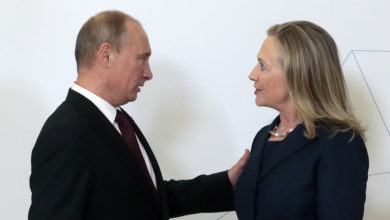Iran launches space rocket (VIDEO) — Analysis

According to Iranian media reports, Tehran conducted an additional test on its three-stage satellite rocket carrier rocket in an attempt to increase its national space program. Washington believes that it is part of an effort to develop long-range nuclear strike capability.
Iranian television aired footage from the countdown to the blastoff, although it was unclear when and where exactly the rocket was launched. According to reports, the rocket was a three-stage Satellite Launch Vehicle (dubbed Zuljanah), which can use both solid and liquid fuels.
A spokesman for Iran’s Defense Ministry, said the launch was conducted for “predetermined research purposes,” and claimed that it proved that Zuljanah is competitive with the world’s top satellite carriers in technical aspects, according to Press TV. According to reports, the rocket measures 25.5 meters in length and can carry one 220-kilogram satellite or several smaller satellites into orbit.
While the take-off appeared to go smoothly, just like during the rocket’s sub-orbital flight last February, the defense ministry didn’t clarify whether the latest test was successful.
The White House immediately raised concerns about the launch and referred to the action as “unacceptable”. “unhelpful and destabilizing,” as Washington seeks to impose restrictions on the country’s ballistic missile program as part of any future nuclear deal with the Islamic Republic.
Iran spent heavily on rocket technology to support its military applications, arguing that it required a reliable conventional missile defense against the US and regional allies such as Israel and Saudi Arabia. The Iranian military would benefit from being able to launch satellites into orbit, which could increase its communication and surveillance capabilities.
Washington repeatedly accused Tehran of using space launches to test technologies required to create an intercontinental ballistic missile – a delivery vehicle that Iran could use to pose a threat to the US mainland if paired with a nuclear warhead.

In 2018, then-US President Donald Trump’s administration unilaterally left the deal and reimposed sanctions against Iran, targeting its oil, petrochemicals, shipping and other sectors. After succeeding Trump in the White House, Joe Biden expressed his eagerness to restore the agreement, with hopes to expand it to also include Tehran’s regional activities and ballistic missile program.
Following a year’s worth of negotiations, talks between Iran-world powers were briefly resumed. However, they stopped again in March. Washington promised Iran that no future US president would withdraw from the new accord.
Share this story via social media
[ad_2]







